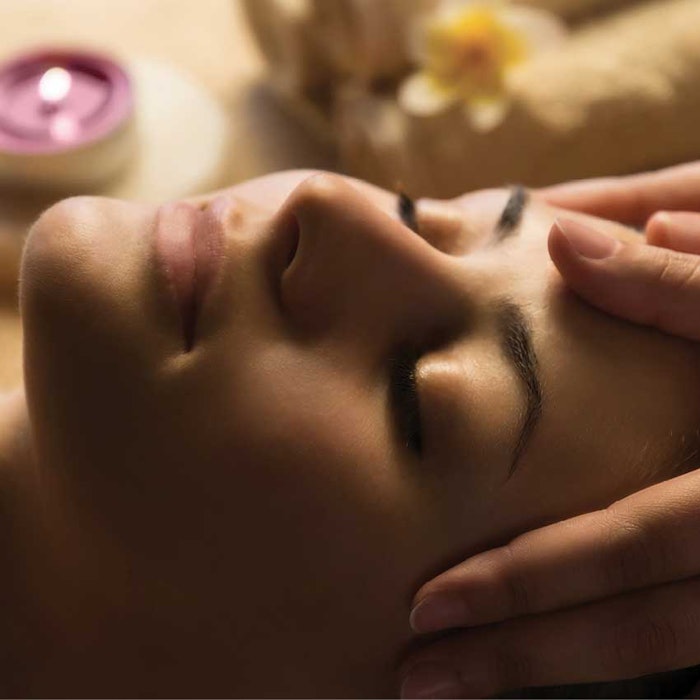
The demand for natural products and complementary and integrative medicine (CIM), also referred to as alternative medicine, is significant. An estimated $37 billion was spent on CIM in 2007, with one-third of adults in the United States routinely using it.1 Within dermatology and skin care, the use of CIM may even be higher.2
People have gravitated toward the use of natural products and therapies as these are perceived as safer, especially those coming from traditions that have delivered skin care treatments for millennia. For example, Traditional Chinese Medicine (TCM) has been practiced for centuries. Industry knowledge about TCM has been refined through empirical observations and clinical testing, and published in the Chinese medical literature. In fact, numerous ingredients, such as salicylic acid and cancer therapeutics, come from traditional medicines—and there is major potential for further developing others for new products and applications.3 This column briefly reviews how CIM is, itself, being integrated into the health and dermatology sectors.
Bridging Health and Wellness
Although obesity and diabetes rates have grown steadily, there is an increase in demand for health and wellness solutions. This is readily apparent to anyone who walks through a grocery store today. Produce sections are larger and have more variety than they did one to two decades ago. Even entire aisles are dedicated to natural and healthy alternatives and selections.
This trend toward natural living also is apparent to physicians, as patients increasingly ask about safer, more natural treatment alternatives. Thus, the current state of health care is shifting from a cautious and hesitant attitude toward CIM, to one that engages in evidence-based research and develops clinical standards around integrative methods.
The shift in health care is so significant that physicians are developing integrative approaches; clinics and hospitals are employing CIM practitioners; and even emergency rooms are utilizing CIM practices.4 Countless research projects are also being developed to evaluate the efficacy of different techniques used in CIM, including wellness coaching,5 herbs, diet and nutrition, massage and acupuncture, among others.
Academic centers now recognize the importance of integrative approaches to health. Many medical schools offer integrative medical care.6 Some have taken the next step to develop integrative medical facilities serving both as dedicated sites for integrative medicine, and as administrative bodies to promote interdisciplinary research.
Examples where CIM formally bridges conventional medicine include the Osher Integrative Medicine programs at the University of California, San Francisco and Harvard Medical School. In some cases, the interaction transcends medical school, such as at the University of Arizona Center for Integrative Medicine, which offers specific training to students in health-related fields.
At the University of California, Davis, the Foods for Health Institute is composed of members spread across multiple departments with the goal of bridging research across fields such as nutrition, food science and medicine. The emergence of such centers and partnerships signifies integrative medicine is not just a change in the public’s perception of health care, but also a change in the academic fiber itself.
Countless research projects are being developed to evaluate the efficacy of different techniques used in CIM, including wellness coaching, herbs, diet and nutrition, massage and acupuncture, among others.
Researching Integrative Medicine
With the growing public interest, use and need of CIM, the National Institutes of Health (NIH) has dedicated a research center to it. The mission of this National Center for Complementary and Integrative Health (NCCIH, formerly NCCAM) is to explore the effects, mechanisms and safety of CIM through rigorous scientific inquiry; and with more than $125 million dedicated to CIM research, funding agencies clearly are taking CIM’s role in health and well-being seriously.7
Further exploration of integrative medicine and use of traditional medicine may also be a fruitful and efficient path to discover new ways to deliver these traditional therapies. For example, there is a long-standing belief in the synergistic effects of TCM with multiple herbal prescriptions. Some studies have confirmed this approach,8 although others have not.9 Additional research may help to uncover the most powerful combinations and methods of administration for these long-standing medical traditions.
Conducting quality research is challenging given the historical distrust of conventional medicine toward alternative approaches. Yet the rising consumer demand and growing availability of resources (e.g., NIH funding) have resulted in more quality research in the field. With a growing focus on patient-centered outcomes, this trend is increasing. As a result, more data is available on the utility and safety of alternative approaches, and more randomized control trials (RCTs) of alternative methods are being funded, conducted and published.
For example, Medline shows the number of randomized controlled trials sponsored by the NCCIH has steadily increased over the last 15 years. Systematic reviews are considered the highest level of evidence to support clinical decisions because they represent the synergetic synthesis of results from several RCTs. As more RCTs become available for the use of alternative approaches, systematic reviews of alternative treatments will be possible, as in the case of Cao et al.10
Although recent trends are encouraging, epic gaps still remain between true integration and current practice and research. The current RCTs conducted are, by and large, efficacy studies. That is, these studies focus on a single intervention at a time and test its effects in an unnaturally controlled environment. Although this is “good” research, this approach may be obsolete when it comes to testing the effects of truly integrative practices on health outcomes.
Fundamental to the integrative approach is the deployment of multiple interventions with the goal of simultaneously affecting multiple biological systems in the body and the hope of synergizing towards the overall health of the individual. One way to address this gap is by conducting effectiveness trials that test an intervention, which may be multi-component, in real-life situations and allowing for all the inherent biases in this design. The results of such studies tend to be more applicable in practice; as in the example of Srikanthan et al.11
Before such studies can be designed, a space for communication between various health related disciplines must be created. Such space will allow for the development of truly cohesive integrative medicine interventions, and hopefully will lead to the generation of quality data and outcomes.
Progression in Medicine
The future of integrative medicine is promising for both medical and cosmetic dermatology. The regulations for cosmetic research are less cumbersome, and the cosmetic and personal care product industries are primed to lead the way to integrate the knowledge from alternative medical fields in a thoughtful and practical way for practitioners, industry and consumers alike.
References
- 1. J Allen et al, A prospective comparison of bilateral photoplethysmography versus the ankle-brachial pressure index for detecting and quantifying lower limb peripheral arterial disease, J Vasc Surg 47(4) 794-802 (2008) PMID: 18381141
- 2. ET Landis et al, Complementary and alternative medicine use in dermatology in the United States, J Altern Complement Med 20(5) 392-398 (2014) PMID: 24517329
- 3. N Tandon and SS Yadav, Contributions of Indian Council of Medical Research (ICMR) in the area of medicinal plants/traditional medicine, J Ethnopharmacol 10.1016/j.jep.2016.07.064 (2016) PMID: 27452657
- 4. AS Reinstein et al, Acceptability, adaptation and clinical outcomes of acupuncture provided in the emergency department: A retrospective pilot study, Pain Med 10.1093/pm/pnv114 (2016) PMID: 26917627
- 5. RQ Wolever et al, Advancing a new evidence-based professional in health care: Job task analysis for health and wellness coaches, BMC Health Serv Res 16 205 (2016) PMID: 27349746
- 6. DM Eisenberg et al, Establishing an integrative medicine program within an academic health center: Essential considerations, Acad Med 91(9) 1223-1230 (2016) PMID: 27028029
- 7. https://nccih.nih.gov/about/ataglance (Accessed Jan 10, 2017)
- 8. C Han and J Guo, Antibacterial and anti-inflammatory activity of traditional Chinese herb pairs, Angelica sinensis and Sophora flavescens, Inflammation 35(3) 913-919 (2012) PMID: 21976127
- 9. X Zhou et al, Synergistic effects of Chinese herbal medicine: A comprehensive review of methodology and current research, Front Pharmacol 7 201 (2016) PMID: 27462269
- 10. H Cao et al, Complementary therapies for acne vulgaris, Cochrane Database Syst Rev 1:CD009436 (2015) PMID: 25597924
- 11. A Srikanthan and E Amir, Efficacy-effectiveness gap as an obstacle to translating clinical trials to clinical practice, Eur J Cancer 51(8) 905-906 (2015) PMID: 25857548











